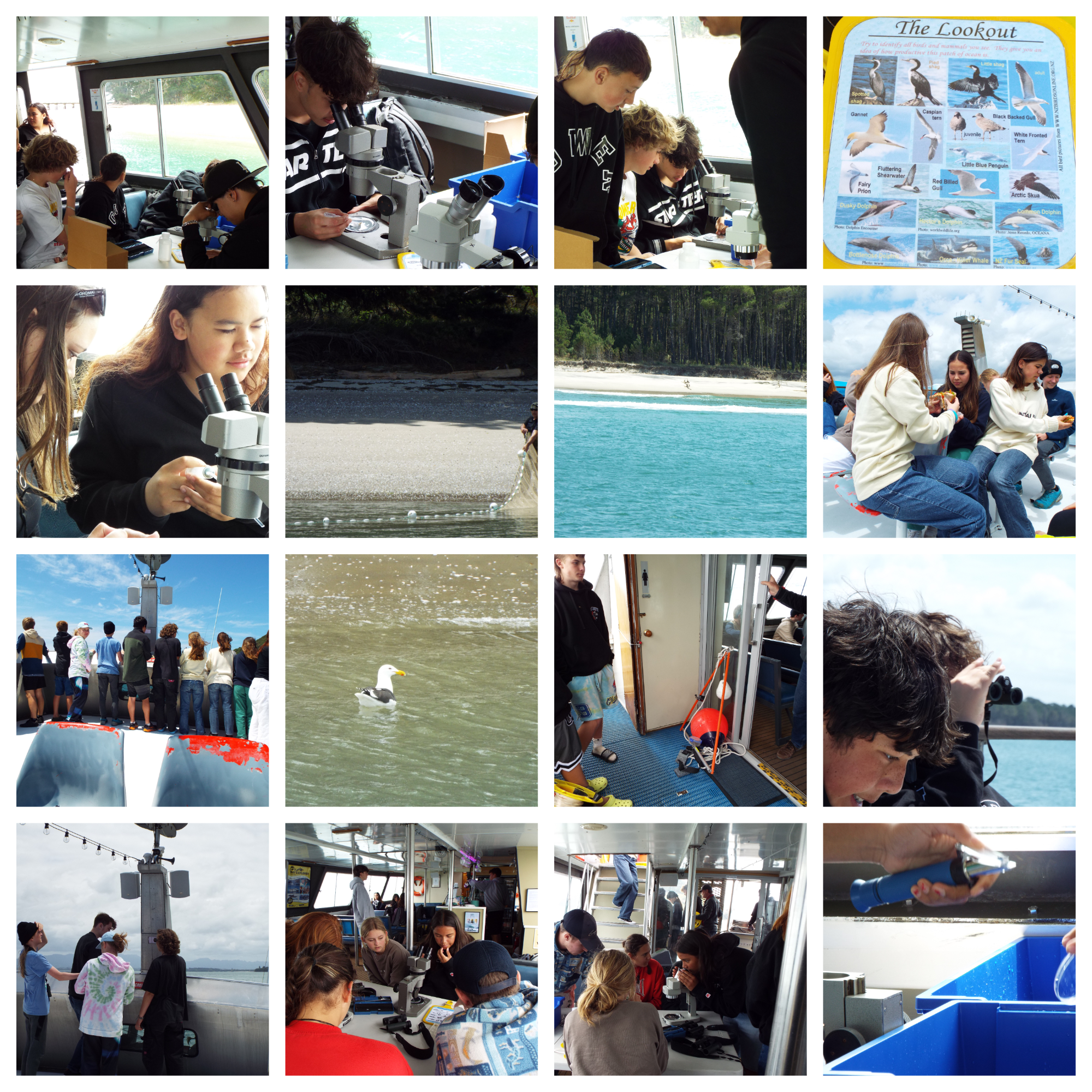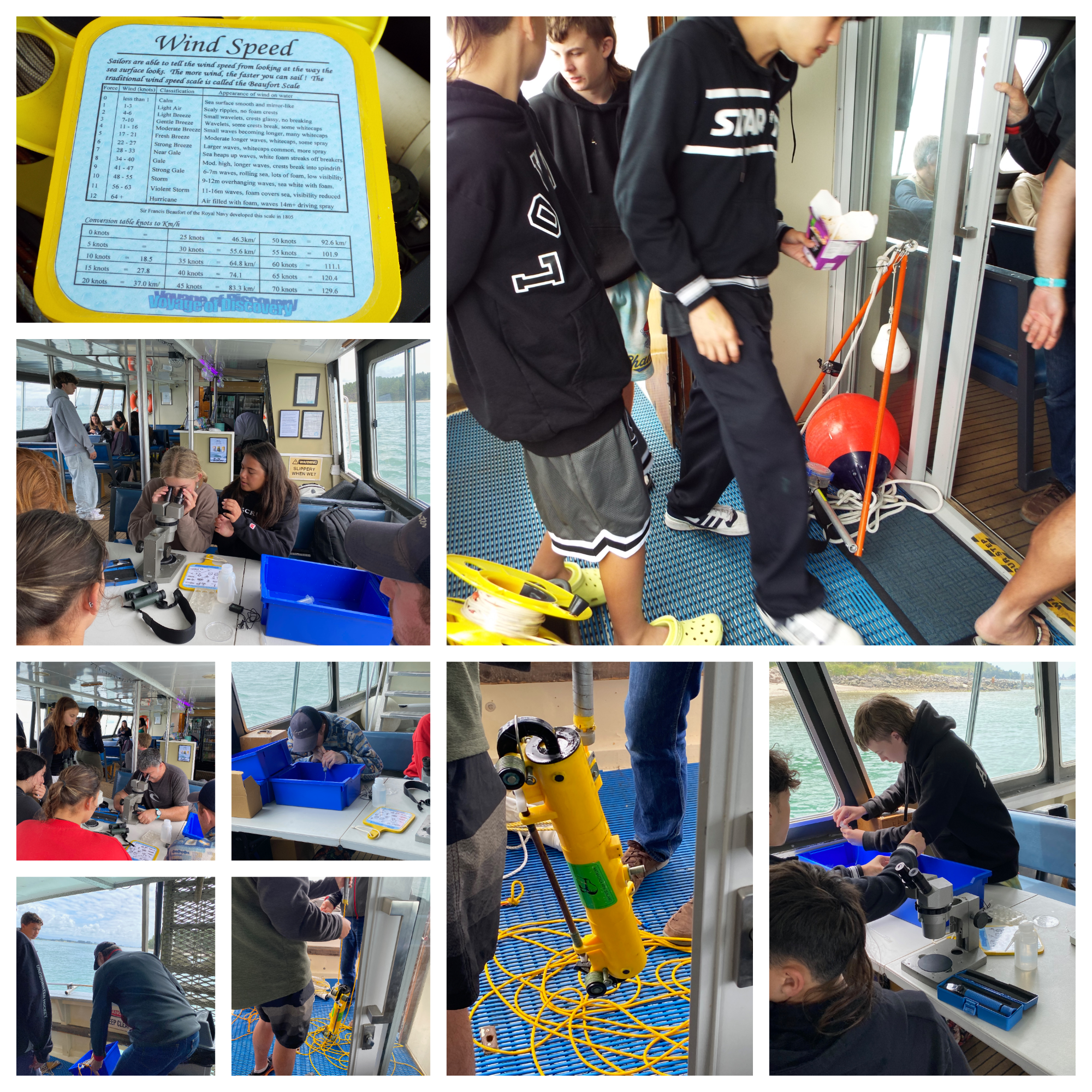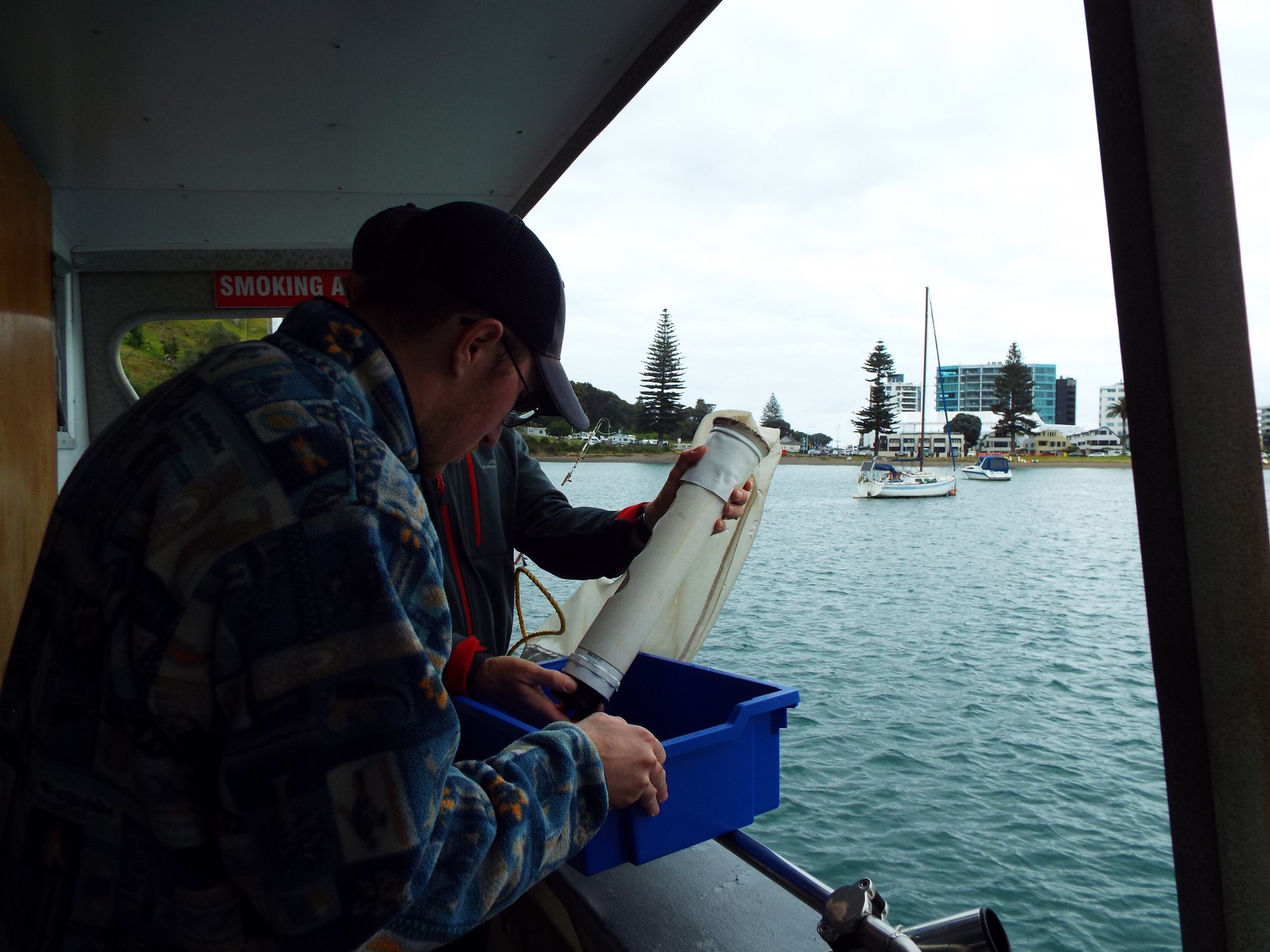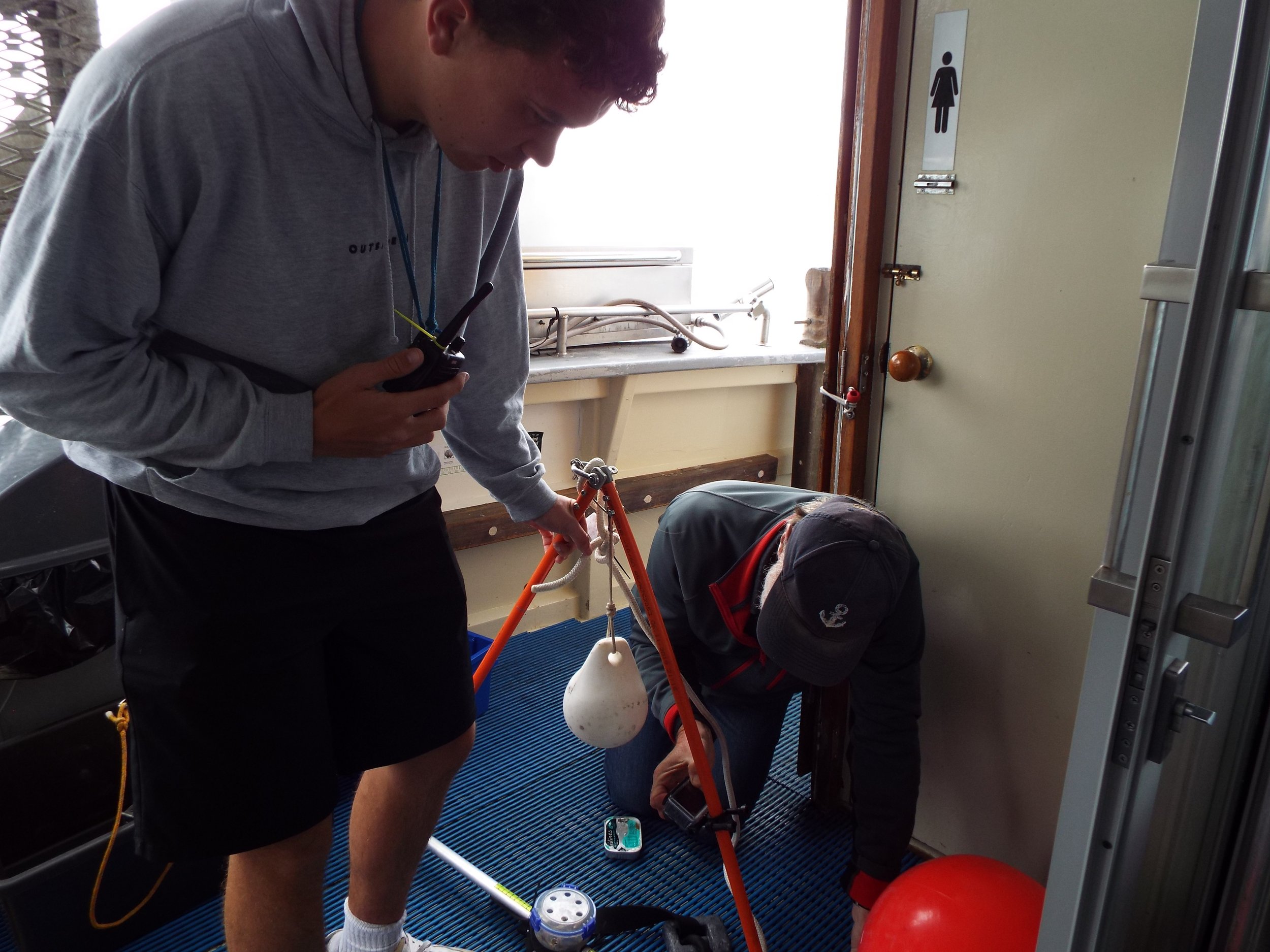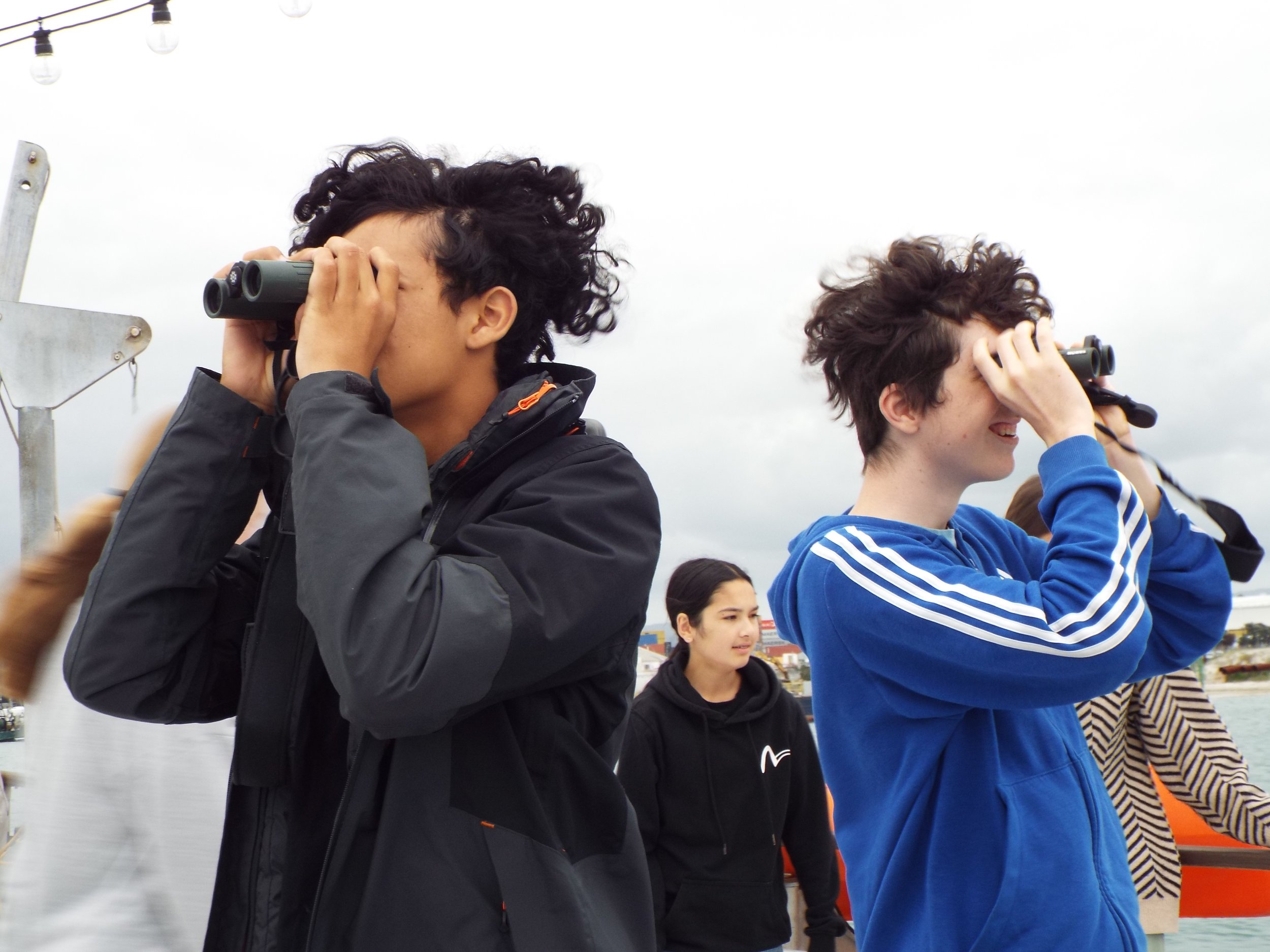Ocean microplastics @Tauranga
Mt Maunganui students experienced a boat trip trawling for microplastics in the Tauranga harbour. PTC Trust collaborated with Skipper Brandon from Bay explorer, Richard de Hamel and researchers at the University of Waikato Tauranga to facilitate such an opportunity. For many of these kids, this was the first time on a boat and there was much to get done in the short frame of time.
Fishing nets, plankton nets, bio viewers, binoculars, microscopes - students had almost everything they would need to observe marine life and detect any microplastics. Compared to this similar trip 2 years ago, the end of the day resulted in no detected microplastics. However, there was a lot to observe in the way of zooplankton and phytoplankton.
Plankton Sampling
Students had a lot of fun with microscopes and plankton guides which they used to identify microscopic plants and animals.
Not finding microplastics was a good sign. According to the research paper ‘Plastics and Plankton in Our Seas’ by scientists Penelope Lindeque et al, there are some harmful risks of microplastic to our phytoplankton.
Microplastics are a real risk to marine life.
Measuring the salinity of the water
Using a saltwater refractometer to measure the salinity of the water produced mixed readings as the first sampling were high and the second sample reading closer to normal.
Measuring wind speed of a boat
Some students got the opportunity to measure the boats windspeed using nautical instruments
Baited Remote Underwater Video (BRUV)
The Baited Remote Underwater Video (BRUV) loaded with a can of sardines as bait.
Identifying birds and mammals
Marine birdlife was very productive along this patch of ocean. Students in the first group noticed a huge flock of black birds flying overhead as they pulled out of Tauranga harbour. They could have been Little Shags, Active Skuas, Black Backed Gull. There were also sightings of small fishes leaping out of the water.


